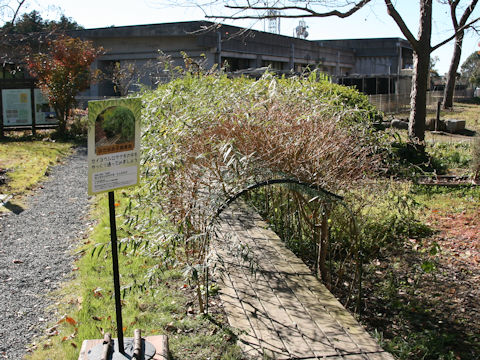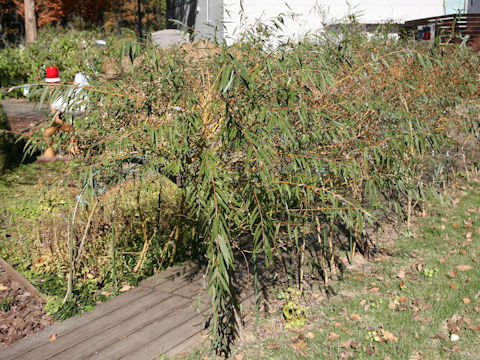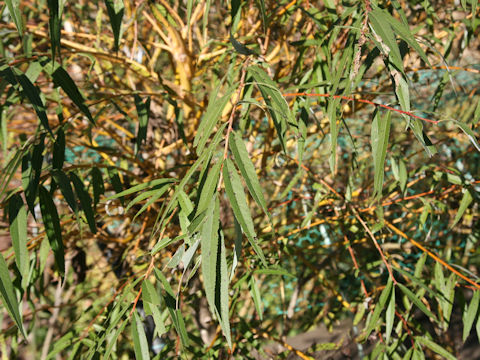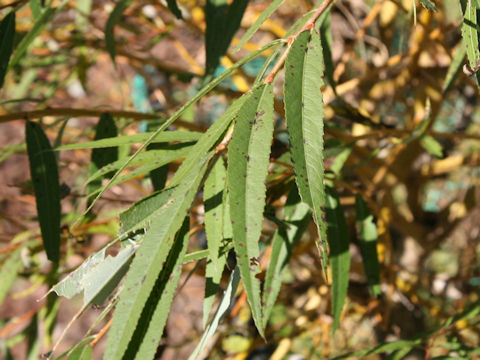
|
The White willow (Salix alba) belongs to Salicaceae (the Willow family). It is a tall deciduous tree that is distributed from Europe to western and central Asia, northern China and northwestern Africa. It grows in river basins and low-lying wetlands, and can reach heights of 10 to 30 m. The bark is grayish brown, and in older trees it develops deep fissures. The leaves are lanceolate or oblanceolate, 5 to 10 cm long, and have fine, silky hairs on the underside. It is dioecious. In early spring, it produces catkins at the ends of its branches and flowers. In Europe, the decoction of the bark has been used as a painkiller since ancient times. In the first half of the 19th century, the antipyretic properties of this extract began to be noticed, and after repeated improvements, it was sold as aspirin in 1899. In Chinese, it is called "白柳" (bai liu).
|



